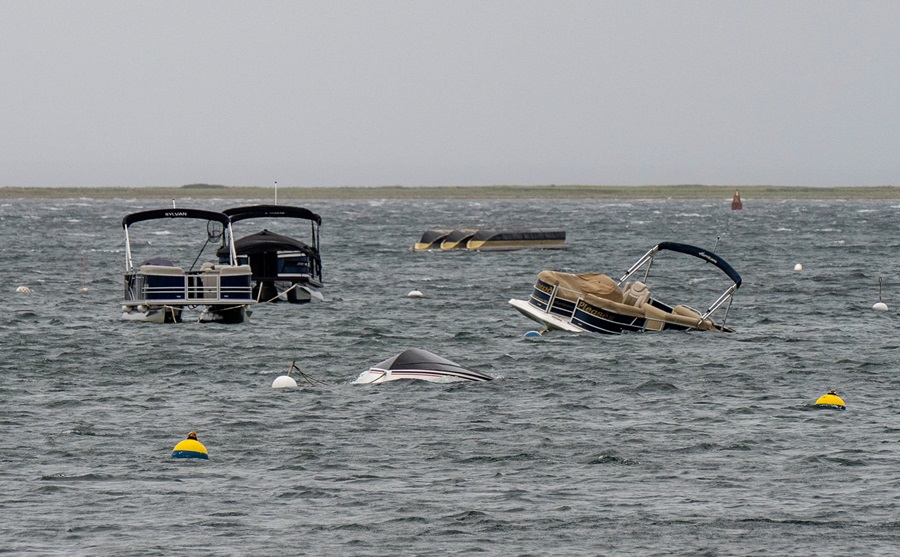Just when the striped bass were starting to take hold, with good numbers of large fish settling into the area around Billingsgate Shoals, along comes a late-season winter-like nor’easter.
This has set us back. In the days following the storm on May 22 and 23, the striped bass were nowhere to be found, and we had 45- to 48-degree water across Cape Cod Bay.
It seems the mackerel were the only ones undeterred by the storm, as they remained thick in Provincetown Harbor. They are stacked up along the western edge and in the Horseshoe Cove.
The storm wreaked havoc on boats, too, and some owners are probably asking themselves how it got so bad so fast. Coastal storms are funny things. The way they track has a huge effect on both wind velocity and direction. When storms track close to the Cape and just west, with their counterclockwise rotations, we get south to southwest winds. If they wiggle a little to the east, we get northeast winds.

In this latest case, the prediction was for the wind to come out of the northeast with heavy rain. We can live with that. As deadly as winds from the northeast can be on the ocean side of the Outer Cape, they don’t have that same effect on the bay side. This is all about fetch length. Fetch is the distance traveled by wind across open water before it hits land. The higher the fetch, the more destructive the effects on land can be. In our harbor, the winds with the highest fetch are those from the southeast. Well, despite the prediction of northeast winds, this storm tracked differently, and we got southeast winds.
I have written many times in these pages that Provincetown is not a harbor of safe refuge unless you are either behind the breakwater or way up in the Horseshoe Cove. Everyone else is moored or anchored in what are essentially wide-open waters with fairly deep water very nearby. Many things can go wrong under these conditions.
Most recreational boats are not built to withstand the constant pounding that six-to-eight-foot waves can bring on for hours in a storm like this. The pressure is enormous on a boat’s cleat, the pennant line, and the chains, and even the staple in the mooring block can fail.
I should know. I was one of those who lived for 10 years out there on my boat. Despite all the precautions I took, going with sizes of chain and lines far bigger than I needed, in 2020 I had a mooring fail, and that sent my boat under the Coast Guard pier. It was totally destroyed.
I would normally come off my mooring and get a slip for the night when they called for heavy south or southeast winds, but in that case the winds came in much stronger than predicted.
Nine boats were lost in last week’s storm. That’s a high number, even for us. My advice to anyone with a boat on a mooring in our harbor is this: any time you hear of sustained south or southeast winds of 25 miles per hour or more, get your boat out of the water or rent a slip in the marina for the night. Better to be safe than sorry.



